Malus (Apple, Orchard Varieties)

Malus (Apple, Orchard Varieties) |
 |
| Trees &
Shrubs Botanical Index |
Trees
& Shrubs Common Name Index |
Trees &
Shrubs Seed Germination Tips |
Growers Accessories |
| Vegetable
Seed |
Flower
Seed |
Herb Seed |
Home |
Considered the most
important of the temperate climate fruits, apples have been a favorite
for cultivation for hundreds of years. It is thought that apples
originated in the mountains between the Black and Caspian Seas where a
multitude of wild varieties still exist and exhibit a
wide array of different characteristics. Apples traveled the
world over and arrived in the US with the European immigrants, but of
course, we all know that the best apple is the one in your hand.
Though they
originally preferred climates with a good cold winter chill to produce,
varieties are now available that can be grown almost
anywhere. Most varieties are not self
pollinating and even these do better with at least two compatible trees
for
pollination. Although some
trees are available on their own
root systems (seedling trees), most modern apples are grafted onto
vigorous rootstocks. Rootstocks are available to increase the
disease resistance of the scion (tree grafted onto it) or to dwarf the
tree a bit (semi-dwarf) or a lot (dwarf).
PICK YOUR TREE
Apples are available in an amazing array of types and sizes on a
collection of variable rootstocks. All apples should be planted
with cross pollination in mind, even those varieties considered self
pollinizing produce much better when planted with a polllinator. When choosing varieties, make
certain to pick
trees that will bloom at the same time (early, mid, or late season), as
indicated in the descriptions below. These times are given for
USDA Zone 5 of the US and may vary by location. Crabapples
(ornamental or fruiting varieties) can act as good pollinators.
Also, you may want to keep in mind that some apple varieties are
naturally biennial - they produce large crops only every other
year. Others are annual heavy producers. Also, some apples
may not polinate other trees as their pollen is sterile. And please
keep in mind that apples are pollinated primarily by bees and do not
spray your trees with insecticides during blooming. We have few
enough honey bees as it is.
PICK YOUR SPOT
Apples should be planted in a location that has good air circulation,
which promotes quicker drying of the leaves after rains (this helps to
minimize fungal infections and mildew). Low spots, frost pockets
or areas in which cold air settles are colder that higher ground and
should be avoided. The best location is on sloping land with an
elevation above the surrounding area in full sun and away from large
trees. The soil should be well drained medium clay, though apples
do well in heavy clays if well drained. Soils that do not drain
well promote root rot and make very sickly trees. Coarse sandy
soils and sttep slopes should be avoided as they drain too rapidly and
produce (again) lousy trees. There are rootstocks that have been
developed to compensate for many soil problems and these should be
taken into consideration if your soil is not condusive to apple
growing. If several trees are to be planted, the entire area may
be plowed and harrowed a few months before planting. It is perfectly
alright to plant apples in sod, though the grass should be removed
around the tree in advance of planting.
OKAY, LET's PLANT!
Apple trees should be spaced according to the rootstock used.
Although different rootstocks produce trees of varying heights, below
is a chart that works as a good rule of thumb. These measurements are
each way (rows and spacing in the row). Spacing can be greater,
but try to keep the trees within about 100ft of each other.
Rootstock
Spacing
Seedling 15 -
18ft
Semi-dwarf 12 - 15ft
Dwarf
8 - 10ft
To plant a bareroot seedling, first remove any dead or damaged
roots. Place the tree in a bucket of water or wrap the dampened
roots with plastic or damp straw so that they will not dry during the
planting procedure. Dig a hole large enough to accomodate the
roots comfortably, allowing the planted tree to have the grafted union
about 2 inches above the soil like. Keep the topsoil (the first 6
inches of soil near the surface) removed separate from the
subsoil. Mix the subsoil with peat moss or good compost, then use
this mixture ot fill in around the roots. Make sure that this soil is
making good contact with the roots and that there are no gaps in which
air or water might accumulate, so fill in a little at a time and pack
it tightly by stepping on it occasionally. Do not fertillize the
tree at this time. The tree should stand as straight as
possible. Dwarf trees generally need to be staked to prevent
leaning as their root systems are not as vigorous as seedling and
semi-dwarf. Also, if you live in an area in which deer or other
animals roam freely, you may want to use a tree guard around the trunk
to prevent the animals from 'ringing' the tree (removing the bark all
around the tree) or damaging the trunk and use stakes and guy wires to
keep it upright until established.
PRUNING
Newly planted trees should be pruned to allow a central leader, or main
vertical shoot to emerge from the trunk. Leave several horizontal
branches arranged around the leader. Make certain that these do
not emerge from the leader directly opposite one another or directly
above one another, as this will weaken the structure of the tree.
There should be a space of about 18 inches between horizontal brances
to allow light to reach the branches. A correctly pruned tree
with a central leader should resemble a Christmas tree shape.
Before pruning, disinfect your pruning shears and tools with an ammonia
cleaner or household bleach.
Pruning after
planting should be done while the tree is dormant to encourage faster
growth. Some trees, however, are more vigorous growing than others and
can benfit from some summer pruning to slow the growth of tree
down. Water sprouts, or vigorous vertical shoots that may appear,
can be removed at any time. These sap the tree of strength that
can be used to produce fruit.
THINNING
When we have a bumper crop of apples, we are jumping up and down with
joy, but if the tree is small or the crop too large for it, for the
tree its like being none months pregnant during a Texas July.
When the tree is overloaded with fruit, it is best to remove enough
fruit to keep the spacing between them at about 4 inches .
This promotes that good circulation for which we are looking and
prevents nasty little pests from living in the dark spaces in between
the fruit. This also prevents breakage of branches which may
happen as the fruit gets heavier. You'll also have much larger
fruit. Just remember not to remove the fruit until after the June
drop, when the tree will naturally drop a portion of its fruit.
FERTILIZER
A good dressing of composted manure every spring is usually all that is
required to keep your trees in top shape, but if you choose, you may
add a balanced fertilizer, like 10-10-10 to your trees. Apply 1
lb per tree one year after planting, 2 lb during the second year, 3 lbs
in the third year, and so forth with a maximum of 6lbs per tree. This
should be scattered along the drip line, or the line around the tree at
which the foliage shades the ground, and kept about 6 inches away from
the trunk of the tree to avoid burning the bark.
CARE
Removed any dead or damaged branches as they occur to avoid
contamination by disease. Keep the ground under your trees clear
of debris and leaves. Keep grass clipped or mowed.
TO SPRAY OR NOT TO SPRAY
Insects love fruit. So do fungi. And midew. And... well, thats
life - all kinds. To keep the fruit for yourself, you should
adopt a spray schedule. You can use commercially available
preparations with captan, etc. or you can choose to keep it
simple. We are in the simple camp and have had excellent luck
using these methods. Either way, use a dormant oil spray in the
early spring before the buds swell and the temperatures are still low
(Februrary or March in the midwestern US). In our orchard, we use a mix
of vegetable and tea tree oils mixed in water with a couple of drops of
dish soap to make it stick. (You'll have to shake your sprayer
frequently to keep it mixed.) Dormant oil can be sprayed up until the
new growth is about a half inch long. Dormant oil only needs to
be sprayed every 2 or three years.
When the buds are
still in tight clusters and have not opened. spray for rust and bugs
with a mix of sulfur and neem oil. Repeat this mix weekly just
before the buds open til the time they fall. Also, during this
time, you might use a mixed spray made with cayenne pepper and
garlic. These may be used all during the growing season.
You may also benefit from releasing predatory wasps or ladybugs into
your trees during the summer. At harvest, you may end up with a
few spots, but healthy apples.
Conventional sprays
use a fungicide (usually Captain) and an insecticide (such as carbaryl,
permethrin, malathion,or methoxychlormix). Spray schedule is as
follows:
Dormant Oil
Half inch green
Conventional Spray
Tight cluster (buds small, not swollen)
Pink bloom (not yet open)
Full Bloom (fungicide only)
Petal fall
First cover (1 week after petal fall)
Second Cover (2 weeks after petal fall)
Repeat every 2 weeks until early September
HARVESTING
Apples mature at different times, so it is very easy to have fruit
continuously from August to frost. If you pick the fruit and it
releases easily, its most likely ripe and ready for picking, but a bite
will tell you for sure. Apples should be picked, not allowed to fall on
the ground which will cause bruising and ruin their keeping ability, or
left on the tree too long, as this may cause water-core or a soft,
watery inside. They should be stored in a cool place at about
32-33F in boxes (wooden slatted crates are best) for the longest
storage time. Keep them away from any stored potatoes or other
vegetables, as the apples give off gasses which can spoil
veggies. Apples may also be used to make cider,applesauce,
jellies, and they can be canned as sliced or diced apples or apple pie
filling, or frozen as slices, applesauce, pie filling or pies.
Your imagination is the limit.
OUR TREES
We sell the highest quality healthy seedlings of the finest of the old
and new varieties. Pick
the ones that are best for you. At shipping time, our fruiting
apple trees are two year trees unless
otherwise indicated.
Our trees are available
in 3 sizes:
Dwarf trees produce approximately 2-6 bushels of fruit per year and
begin producing in 2-3 years. At maturity, they reach between
6-8ft. in height, which makes them perfect for the smaller garden.
Semi-dwarf trees grow to an average height of 12-15ft. at maturity and begin to bear fruit in 3-5 years. Average yields are between 8-12 bushels of fruit.
Standard trees
reach
20-25ft. in height and begin to bear in about 5-6 years. Annual
yields
are 10-15 bushels of fruit.
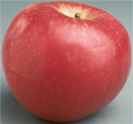 #AP1422SD Akane Semi-dwarf |
|
Akane (Prime Red) Early A cross between Jonathan and Worchester Pearmain, this juicy, white fleshed apple is fragrant and delicious. Excellent choice for eating fresh or processing. Hardy to -30F (-34.4C) #AP1422SD Semi-dwarf $39.95 |
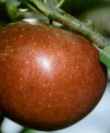 #AP2673SD Arkansas Black, Semi-dwarf |
|
Arkansas Black Late season Heirloom - circa 1870 Arkansas. Gorgeous apple with slightly conical fruits with dark red skin that becomes almost black. The fruit is 'hard as a rock' when harvested, but softens in storage. One of the best of the storing apples, the flesh is firm, fine grained, crisp and slightly tart. Hardy to -20F (-28.8C). #AP2673SD Semi-dwarf $39.95 |
| #AP2673S Arkansas Black, Standard |
|
Arkansas Black Late season #AP2673S Standard $39.95 |
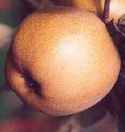 #AP4343SD Ashmeads Kernel Semi-dwarf |
|
Ashmeads Kernel Mid season An enduring favorite, this English apple dates from the early 1700's. A sharply acidic apple taste when first picked, it will mellow after several weeks in storage. The skin is yellow-green with orange russeting. A vigorous growing tree. Hardy to -30F (-34.4C) #AP4343SD Semi-dwarf $59.95 |
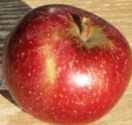
#AP3584SD Baldwin Semi-dwarf |
|
Baldwin Mid season Heirloom - circa 1870 Massachusetts. The most frequently planted apple in the US until the 1920's, it popularity dwindled mainly because its tendency to bear biennially. Fruit is large, with a bright red skin covered with tiny white spots. Hardy to -20F (-28.8C) #AP3581SD Semi-dwarf $59.95 |
| #AP3581S Baldwin Standard |
|
Baldwin #AP3581S Standard $59.95 |
 #AP4348SD Black Ben Davis Semi-dwarf |
|
Black Ben Davis Heirloom, circa 1880. Medium sized, slightly conical shaped fruit. Color is deep red. Prized for apple butter, but makes excellent pies as well. Hardy to -20F (-28.8C) #AP4348SD Semi-dwarf $59.95 |
 #AP3582SD Black Limbertwig Semi-dwarf |
|
Black Limbertwig Mid season Heirloom - Medium sized fruits have deep red skin and sweet yellow flesh. The tree has a rather weeping habit. Good variety for cider, apple butter and eating fresh. Hardy to -20F (-28.8C) #AP3582SD Semi-dwarf $59.95 |
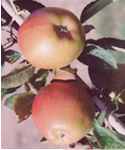
#AP1038D Braeburn Dwarf |
|
Braeburn Mid season Originated in Australia. Large yellow-green fruit with and orange blush. Tangy sweet and juicy. Good apple for eating fresh or baking. Annual producer. Hardy to -20F (-28.8C) #AP1038D Dwarf $39.95 |
| #AP1038SD Braeburn Semi-dwarf |
|
Braeburn Mid season #AP1038SD Semi-dwarf $39.95 |
| #AP1038S Braeburn Standard |
|
Braeburn Mid season #AP1038S Standard $39.95 |
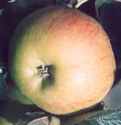 #AP4322SD Bramleys Seedling Semi-dwarf |
|
Bramleys Seedling Late season Heirloom - circa England 1809. Once labeled Englands most popular apple. The fruit is large, green-yellow with red stripes and slightly flattened. A good type for northern climates as it blooms late. Keeps well and makes great cider. Hardy to -20F (-28.8C) #AP4322SD Semi-dwarf $59.95 |
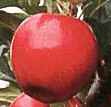 #AP2676SD Buckeye Gala Semi-dwarf |
|
Buckeye Gala Mid Season Highly colored Gala sport of Imperial Gala. Fruit is a deep red in color with crisp white flesh and a seet/tart taste. Vigorous growth. Bears annually. Will not pollinate with other Gala sports or Golden Delicious sports. Ripens mid September. Hardy to -20F (-28.8C) #AP2676SD Semi-dwarf $39.95 |
| #AP2676S Buckeye Gala Standard |
|
Buckeye Gala Mid Season #AP2676S Standard $39.95 |
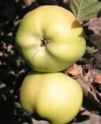 #AP4323SD Calville Blanc d Hiver |
|
Calville Blanc d Hiver Mid season Heirloom - circa 1627 France - Large yellow green fruits with heavy ribbing. Good cooking variety. Hardy to -30F (-34.4C) #AP4323SD Semi-dwarf $59.95 |
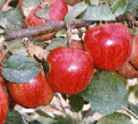 #AP1444D Cameo Dwarf |
|
Cameo Mid season A new variety with bright red striped color and a crsip flesh - tart and delicious. A great storing apple. Hardy and productive. Ripens mid to late October. Hardy to -30F (-34.4C). #AP1444D Dwarf $39.95 |
#AP1444SD Cameo Semi-dwarf |
|
Cameo Mid season #AP1444SD Semi-dwarf $39.95 |
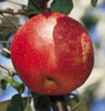 #AP4324SD Chenango Strawberry Semi-dwarf |
|
Chenango Strawberry (Sherwood’s Favorite,
Early Sugar Loaf, Jackson Apple) Early season Heirloom - circa 1850 New York. Fruits are bright red with yellow striping, slightly enlongated and conical. Flesh is juicy and very aromatic. Hardy to -30F (-34.4C) #AP4324SD Semi-dwarf $59.95 |
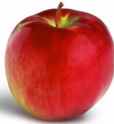
#AP2649D Cortland Dwarf |
|
Cortland Mid season Heirloom - circa 1898 New York. This Ben Davis/McIntosh cross bears medium-sized apples with smooth yellowish skin & crimson stripes and tender white flesh. Reliable producing tree that bears early. Heavy annual crops. Ripens late September- early October. Hardy to -30F (-34.4C). #AP2649D Dwarf $39.95 |
| #AP2649SD Cortland Semi-dwarf |
|
Cortland Mid season #AP2649SD Semi-dwarf $39.95 |
| #AP2649S Cortland Standard |
|
Cortland Mid season #AP2649S Standard $39.95 |
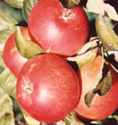 #AP1039SD Cox Orange Pippin Semi-dwarf |
|
Cox Orange Pippin Mid season Heirloom - circa 1830- English apple with orange red skin with red stripes. Sweet, but with an excellent tartness. Good type for cooking or eating fresh. Hardy to -30F (-34.4C) #AP1039SD Semi-dwarf $39.95 |
 #AP4325SD Duchess of Oldenburg Semi-dwarf |
|
Duchess of Oldenburg Early season Heirloom - circa early 1800s - Fruit is medium sized with pale yellow skin covered with crimson stripes. Slightly flattened. Best as a cooking apple. Hardy to -30F (-34.4C) #AP4325SD Semi-dwarf $59.95 |
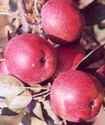 #AP1040SD Empire Semi-dwarf |
|
Empire Mid season A MacIntosh-type apple with deep red coloring and white flesh excellent for eating fresh and for cider. Heavy producing tree. Annual producer. Ripening late September. Hardy to -30F (-34.4C). #AP1040SD Semi-dwarf $39.95 |
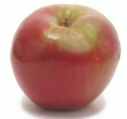 #AP2657SD Enterprise Semi-dwarf |
|
Enterprise Mid season A Purdue Univeristy introduction, this late maturing apple bears early. Fruits are large, deep red and uniform. The trees are immune to scab and resistant to fireblight, cedar apple rust and powdery mildew. Ripens mid to late October. Hardy to -30F (-34.4C). #AP2657SD Semi-dwarf $39.95 |
| #AP2657S Enterprise Standard |
|
Enterprise Mid season #AP2657S Standard $39.95 |
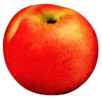 #AP4325SD Fallawater Semi-dwarf |
|
Fallawater Late Season Heirloom - Good all-round use apple with green skin and crisp white flesh. Very large apples, up to 6in. in diameter. Vigorous with huge crops. Hardy to -20F (-28.8C) #AP4325SD Semi-dwarf $59.95 |
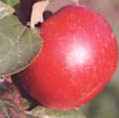
#AP4326SD Fameuse Semi-dwarf |
|
Fameuse (Snow Apple) Mid season Heirloom - circa late 1600s - Fruit is small, dark red , speckled with white. Distinctive flavor - very fragrant. Good variety for eating fresh, cooking and cider. Hardy to -30F (-34.4C) #AP4326SD Semi-dwarf $59.95 |
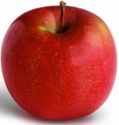 #AP1041D Fuji Dwarf |
|
Fuji Mid season Firm and juicy fruit similar to Red Delicious, bearing at a young age. Yellow-green fruits with a red flush. Long keeping apple. Annual producer. Ripens late September, early October. Hardy to -20F (-28.8C) Zone 5. #AP1041D Dwarf $39.95 |
| #AP1041SD Fuji Semi-dwarf |
|
Fuji Mid season #AP1041SD Semi-dwarf $39.95 |
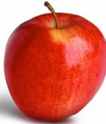 #AP2676D Gala Dwarf |
|
Gala Mid season Bright red apple speckled with white. Flesh is white, crisp and juicy. Good fresh or cooking apple. Hardy to -20F (-28.8C). #AP2676D Dwarf $39.95 |
| #AP2676SD Gala Semi-dwarf |
|
Gala Mid season #AP2676SD Semi-dwarf $39.95 |
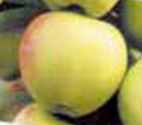 #AP1420SD Gingergold Semi-dwarf |
|
Gingergold Early season One of the best of the early golden apples, this variety has all the good qualities of Golden Delicious, but ripens 6-8 weeks earlier. It can be picked green and allowed to ripen off the tree and so makes a good shipping apple. Ripens mid August. Hardy to -20F (-28.8C) #AP1420SD Semi-dwarf $39.95 |
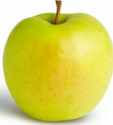 #AP1043D Golden Delicious Dwarf |
|
Golden Delicious Late season Large juicy yellow skinned fruit is a favorite all purpose apple. A favorite for orchards. Annual producer. Ripens late September, early October. Hardy to USDA Zone 5. This variety is self-fertile and does not require a pollinator. #AP1043D Dwarf $39.95 |
| #AP1043SD Golden Delicious Semi-dwarf |
|
Golden Delicious Late season #AP1043SD Semi-dwarf $39.95 |
 #AP4345SD Golden Russet Semi-dwarf |
|
Golden Russet Mid season Heirloom - Fruits are medium in size, green with russeting. Flesh is light yellow, crisp and juicy. Good for cider and eating fresh. Excellent keeping variety. Hardy to -30F (-34.4C) #AP4345SD Semi-dwarf $ 59.95 |
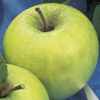 #AP1044D Granny Smith Dwarf |
|
Granny Smith |
| #AP1044DG1 Granny Smith Dwarf |
|
Granny Smith Tree (height at shipping 18-24in.) #AP1044DG1 Dwarf $22.00 |
| #AP1044SD Granny Smith Semi-dwarf |
|
Granny Smith #AP1044SD Semi-dwarf $39.95 |
| #AP1044SG1 Granny Smith Standard |
|
Granny Smith Tree (height at shipping 18-24in.) #AP1044SG1 Standard $22.00 |
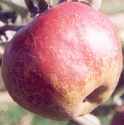 #AP1044SD Gravenstein Semi-dwarf |
|
Gravenstein (Banks Red Gravenstein, Early
Congress) Mid season Heirloom - circa 1600 Germany. Favorite old-time cooking apple with tart white flesh and pretty coloring. Excellent for pies and applesauce. Annual producer. Ripens mid-August. Hardy to -30F (-34.4C). #AP1419SD Semi-dwarf $ 59.95 |
| #AP1044DG1 Gravenstein Dwarf |
|
Gravenstein (Banks Red Gravenstein, Early
Congress) Mid season Tree (height at shipping 18-24in.) #AP1419DG1 Dwarf $ 22.00 |
| #AP1044SG1 Gravenstein Standard |
|
Gravenstein (Banks Red Gravenstein, Early
Congress) Mid season Tree (height at shipping 18-24in.) #AP1419SG1 Standard $ 22.00 |
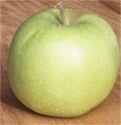 #AP2653SD Grimes Golden Semi-dwarf |
|
Grimes Golden (Grimes Gold Pippin,
Bellflower) Mid season Heirloom - circa 1790 West Virginia. This parent of the Golden Delicious remains one of the favorite apples. Excellent fresh, cooked or made into cider. Vigorous growing tree with large annual crops. Ripens mid September. Hardy to -30F (-34.4C). #AP2653SD Semi-dwarf $39.95 |

#AP1045S Haralred Standard |
|
Haralred Mid season Improved Haralson with crisp deep red fruits. Good winter hardy type, with all round use apples. Hardy to -40F (-40C) #AP1045S Standard $39.95 |
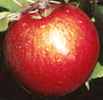
#AP1084S Haralson Standard |
|
Haralson Mid season Yellow green fruits with heavy red striping are excellent for cider, eating fresh, and cooking. Resistant to fireblight and apple rust. Vigorous and productive trees. Hardy to -40F (-40C) #AP1084S Standard $39.95 |
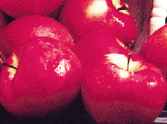 #AP1046D Honeycrisp Dwarf |
|
Honeycrisp Mid season This cross between a Macoun and Honeygold has delicious crisp fruit with bright red skin and yellow flesh. Ripens late September to late October. Keeps for up to 5 months in storage. Annual producer. Hardy to -40F (-40C). #AP1046D Dwarf $39.95 |
| #AP1046SD Honeycrisp Semi-dwarf |
|
Honeycrisp Mid season #AP1046SD Semi-dwarf $39.95 |
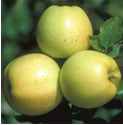 #AP1047D #AP1047DHoneygold Dwarf |
|
Honeygold Late season This cold climate variety is a cross between Haralson and Golden Delicious. Golden yellow fruits are crisp, sweet and prolific. Long keeping variety. Ripens early to late October. Annual producer. Hardy to -40F (-40C). #AP1047D Dwarf $39.95 |
| #AP1047SD Honeygold Semi-dwarf |
|
Honeygold |

#AP1044SD Idared Semi-dwarf |
|
Idared |
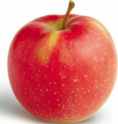
#AP1048D Jonagold Dwarf |
|
Jonagold Mid season Johnathan-Golden Delicious cross. Fruit is red with green blush, crisp, sweet with a delicious tartness. A favorite eating apple. Ripens mid-September. Annual producer. Hardy to -40F (-34.4C). Cannot pollinate other varieties. #AP1048D Dwarf $39.95 |
| #AP1048SD Jonagold Semi-dwarf |
|
Jonagold #AP1048SD Semi-dwarf $39.95 |
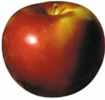
#AP1421D Jonamac Dwarf |
|
Jonamac |
| #AP1421SD Jonamac Semi-dwarf |
|
Jonamac Mid season #AP1421SD Semi-dwarf $39.95 |

#AP2677D Jonathan Dwarf |
|
Jonathan Mid season Creamy golden yellow flesh and green and red skin. Crisp and juicy with a sweet flavor. Great for baking and processing or eating fresh. Hardy to -30F (-34.4C) #AP2677D Dwarf $39.95 |
| #AP2677SD Jonathan Semi-dwarf |
|
Jonathan Mid season #AP2677SD Semi-dwarf $39.95 |
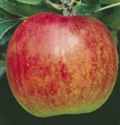
#AP1516D Liberty Dwarf |
|
Liberty Mid season Great self-fruitful (no pollinator needed) all-pupose apple with large red fruit. Stores very well - disease resistant and produces annually. Ripens mid September, early October. Annual producer. Hardy to -30F (-34.4C). #AP1516D Dwarf $39.95 |
| #AP1516SD Liberty Semi-dwarf |
|
Liberty Mid season #AP1516SD Semi-dwarf $39.95 |
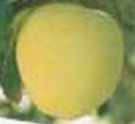 #AP1418SD Lodi Semi-dwarf |
|
Lodi Early season One of the earliest of apples, Lodi has the quality and flavor of Yellow Transparent, but has larger fruits that store and ship better. Thick yellow skin and crisp flesh. Annual producer. Ripens mid-July. Hardy to -30F (-34.4C). #AP1418SD Semi-dwarf $39.95 |
| #AP1418S Lodi Standard |
|
Lodi |
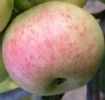 #AP4346SD Lowland Raspberry Semi-dwarf |
|
Lowland Raspberry (Liveland Raspberry) Mid season Heirloom - Russia. Round medium sized fruits are creamy yellow-green with an overall red striping. Flesh is white, crisp and very mildly sweet. Biennial producer. Hardy to -40F (-40C) #AP4346SD Semi-dwarf $ 59.95 |
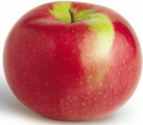
#AP1049D McIntosh Dwarf |
|
McIntosh Mid season Heirloom, circa 1811 Ontario. Fruit is large with white flesh and deep red skin. Aromatic and delicious. Good keeping variety when refrigerated. Apple rust resistant. Ripens mid-September. Annual producer. Hardy to -30F (-34.4C) #AP1049D Dwarf $39.95 |
| #AP1049SD McIntosh Semi-dwarf |
|
McIntosh Mid season #AP1049SD Semi-dwarf $39.95 |
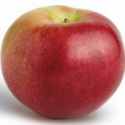 #AP2651SD Macoun Semi-dwarf |
|
Macoun Mid season Dessert type fruits similar in coloring to MacIntosh with firm juicy white flesh. Tree is extremely vigorous and requires agressive thinning to maintain its upright growth habit. Heavy annual crops. Ripens mid-September. Hardy to -30F (-34.4C). #AP2651SD Semi-dwarf $39.95 |
| #AP2651DG1 Macoun Dwarf |
|
Macoun Mid season |
| #AP2651S Macoun Standard |
|
Macoun |
| #AP2651SG1 Macoun Standard |
|
Macoun Mid season |
 #AP4327SD Magnum Bonum Semi-dwarf |
|
Magnum Bonum (Bonum, Red Bonum) Mid season Heirloom, circa 1828 - Great variety for the south and one of the most long lasting favorite early apples. Fruits are medium in size, red over yellow, sweet juicy and delicious. Keeps well in cold storage. Hardy to -20F (-28/8C) #AP4327D Semi-dwarf $ 59.95 |
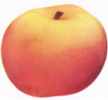 #AP4328SD Maidens Blush Semi-dwarf |
|
Maidens Blush Mid season Heirloom, circa 1817. One of the oldest named varieties in the US. Fruits are medium sized with yellow skin with an overall red blush. Flesh is sweet, crisp and juicy. Great variety for cider, drying or eating fresh. Hardy to -20F (-28.8C). #AP4328SD Semi-dwarf $ 59.95 |
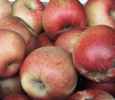
#AP1443SD Melrose Semi-dwarf |
|
Melrose Mid season |
| #AP1443DG1 Melrose Dwarf |
|
Melrose Mid season |
| #AP1443SG1 Melrose Standard |
|
Melrose Mid season |
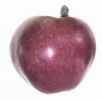 #AP4329SD Mollies Delicious Semi-dwarf |
|
Mollies Delicious Mid season Heirloom. One of the best of the Delicious varieties with crisp red fruits, slightly conical in shape, with a sweet-tart taste. Vigorous tree will sometimes 're-bloom' if hit by frost. Tolerates heat and is a good southern variety. Hardy to -20F (-28.8C) #AP4329SD Semi-dwarf $ 59.95 |
 #AP4330SD Mother Semi-dwarf |
|
Mother (American Mother, Queen Anne) Mid season Heirloom, circa 1840. This old southern variety has small fruits with yellow flesh and red skin with stripes of green. Slightly acidic taste. Good fresh or for processing. Hardy to -20F (-28.8C) #AP4330SD Semi-dwarf $ 59.95 |
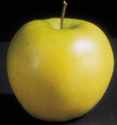
#AP1044D Mutsu Dwarf |
|
Mutsu (Crispin) |
#AP1216SD Mutsu Semi-dwarf |
|
Mutsu (Crispin) Late season #AP1216SD Semi-dwarf $39.95 |
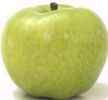 #AP2674SD Newtown Pippin Semi-dwarf |
|
Newtown Pippin (Albemarle Pippin, Green Winter
Pippin, New
York Pippin) |
| #AP2674DG1 Newtown Pippin Dwarf |
|
Newtown Pippin (Albemarle Pippin, Green Winter
Pippin, New
York Pippin)
Mid season |
| #AP2674SG1 Newtown Pippin Standard |
|
Newtown Pippin (Albemarle Pippin, Green Winter
Pippin, New
York Pippin)
Mid season |
 #AP1050S Norland Standard |
|
Norland Mid season This cold hardy variety from Saskatchewan has medium sized red fruit with green stripes, which is best is picked before it is completely ripe. Good keeping type. Hardy to -40F (-40C) #AP1050S Standard $39.95 |
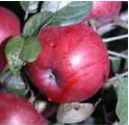 #AP1051D Northern Spy Dwarf |
|
Northern Spy Late season Heirloom, circa 1800 New York. Popular heirloom variety with high quality, firm, tart fruit. Trees are slower to bear, but produce huge crops when they do. Ripens October. Excellent keeping variety. Biennial producer. Hardy to -30F (-34.4C). #AP1051D Dwarf $39.95 |
| #AP1051DG1 Northern Spy Dwarf |
|
Northern Spy
Late season Tree (height at shipping 18-24in.) #AP1051DG1 Dwarf $22.00 |
| #AP1051SD Northern Spy Semi-dwarf |
|
Northern Spy Late season #AP1051SD Semi-dwarf $39.95 |
| #AP1051S Northern Spy Standard |
|
Northern Spy Late season #AP1051S Standard $39.95 |
| #AP1051SG1 Northern Spy Standard |
|
Northern Spy
Late season Tree (height at shipping 18-24in.) #AP1051SG1 Standard $22.00 |
 #AP2650SD Northwest Greening Semi-dwarf |
|
Northwest Greening |
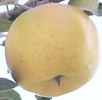 #AP4347SD Pink Pearl Semi-dwarf |
|
Pink Pearl Mid season An Albert Etter introduction in 1944, this variety has bright red fruits with white flesh, blushed pink. Aromatic, sweet. Good for cooking and eating fresh. Hardy to -30F (-34.4C) #AP4347SD Semi-dwarf $ 59.95 |

#AP4349SD Pound Sweet Semi-dwarf |
|
Pound Sweet (Pumpkin Sweet) Heirloom, circa 1830. Prized Southern variety with super large green-yellow fruits with some russeting, blushed with red. One of the best baking apples to be found anywhere. Hardy to -20F (-28.8C) #AP4349SD Semi-dwarf $ 59.95 |

#AP4332SD Ralls Genet Semi-dwarf |
|
Ralls Genet (Jefferson Pippin, Ralls Janet) Late season Heirloom, circa 1810. Legend has it that this variety was sponsored by Thomas Jefferson (Genet, a French ambassador to the US gave cuttings to Jefferson, whi, in turn, passed them on to Ralls for grafting). This ancestor of the Fuji has medium sized yellow fruits with red blushing. Blooms late. Hardy to -30F (-34.4C). #AP4332SD Semi-dwarf $ 59.95 |
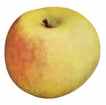 #AP3583SD Reasor Green Semi-dwarf |
|
Reasor Green Mid season Heirloom, circa 1886 Virginia. Thought at one time to be extinct, this variety has rounded green-yellow fruit with a red blush. When cut, the fruit will dry instead of rotting, which makes it a natural choice for drying. Good for processing and eating fresh as well, it has a mild, sweet taste. Hardy to -30F (-34.4C) #AP3583SD Semi-dwarf $ 59.95 |
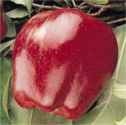 #AP1052D Red Delicious Dwarf |
|
Red Delicious Mid season The most popular apple in the US. Deep red fruits have distinctive cone shape and crisp white flesh. Good all round apple. Ripens late September . Annual producer. Hardy to -30F (-34.4C). #AP1052SD Dwarf $39.95 |
| #AP1052SD Red Delicious Semi-dwarf |
|
Red Delicious Mid season #AP1052SD Semi-dwarf $39.95 |
| #AP1052S Red Delicious Standard |
|
Red Delicious Mid season #AP1052S Standard $39.95 |
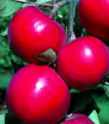
#AP1052SD Red Rome Semi-dwarf |
|
Red Rome Mid season Firm aromatic deep red fruit with white flesh. Good baking variety. Ripens late September Annual producer. Hardy to -30F (-34.4C). #AP1052SD Semi-dwarf $39.95 |
| #AP1052DG1 Red Rome Dwarf |
|
Red Rome
Mid season Tree (height at shipping 18-24in.) #AP1052DG1 Dwarf $22.00 |
| #AP1052SG1 Red Rome Standard |
|
Red Rome Mid season Tree (height at shipping 18-24in.) #AP1052SG1 Standard $22.00 |
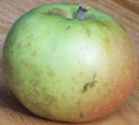 #AP3942SD Roxbury Russet Semi-dwarf |
|
Roxbury Russet Mid season Heirloom, circa 1600 Massachusetts. A favorite for 300 years, Roxbury produces large fruits, green in color with heavy russeting, and with a clear white flesh. An excellent all-around apple, and especially good for cider or juice. Hardy to -30F (-34.4C) #AP3942SD Semi-dwarf $ 59.95 |
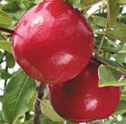 #AP4339D Royal Court Dwarf |
|
Royal Court Mid season This solid blush strain of Cortland has deep red fruits with a mahogany blush. Flesh is snowy white, crisp and juicy. Vigorous trees bear heavily. Hardy to -30F (-34.4C) #AP4339D Dwarf $39.95 |
| #AP4339SD Royal Court Semi-dwarf |
|
Royal Court Mid season #AP4339SD Semi-dwarf $39.95 |
 #AP4342D Royal Empire Dwarf |
|
Royal Empire Mid season This sport of Empire produces fruit that is brighter and deeper in color than its parent. Flesh is creamy white, crisp and sweet. Vigorous growing tree with good branch angles. Hardy to -30F (-34.4C) #AP4342D Dwarf $39.95 |
| #AP4342SD Royal Empire Semi-dwarf |
|
Royal Empire Mid season #AP4342SD Semi-dwarf $39.95 |
 #AP3943SD Sheepnose Semi-dwarf |
|
Sheepnose (Black Gilliflower, Spitz, Red
Gilliflower) Mid season Heirloom, circa 1780 Connecticut. Large, slightly conical shaped fruits turn a deep black-red when ripe. One of the most valued baking apples in the US. Hardy to -30F (-34.4C) #AP3943SD Semi-dwarf $ 59.95 |
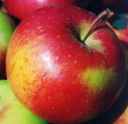 #AP2655D Smokehouse Dwarf |
|
Smokehouse (Gibbon's Smokehouse, Mill
Creek, Red Vandevere) Mid season Heirloom, circa 1830 Pennsylvania. Good keeping apple that makes great pies and sauce and is also an excellent eating apple with a spicy flavor. Ripens mid to late September. Hardy to -30F (-34.4C) #AP2655SD Dwarf $39.95 |
| #AP2655DG1 Smokehouse Dwarf |
|
Smokehouse (Gibbon's Smokehouse, Mill
Creek, Red Vandevere)
Mid season Tree (height at shipping 18-24in.) #AP2655DG1 Dwarf $22.00 |
| #AP2655SD Smokehouse Semi-dwarf |
|
Smokehouse (Gibbon's Smokehouse, Mill
Creek, Red Vandevere) Mid season #AP2655SD Semi-dwarf $39.95 |
| #AP2655SG1 Smokehouse Standard |
|
Smokehouse (Gibbon's Smokehouse, Mill
Creek, Red Vandevere)
Mid season Tree (height at shipping 18-24in.) #AP2655SG1 Standard $22.00 |
 #AP4341D Spartan Dwarf |
|
Spartan Mid season Cross bewteen McIntosh and Newtown Pippin produces a high quality dessert apple with firm medium sized red fruit. Hardy to -30F (-34.4C) #AP4341D Dwarf $39.95 |
| #AP4341SD Spartan Semi-dwarf |
|
Spartan Mid season #AP4341SD Semi-dwarf $39.95 |
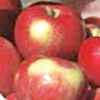 #AP1054SD State Fair Semi-dwarf |
|
State Fair |
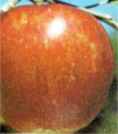 #AP2780SD Stayman Winesap Semi-dwarf |
|
Stayman Winesap (Stayman) Late Season Heirloom - circa 1866 Kansas. Like it's parent, Winesap, it bears medium to large fruits with smooth green skin covered with red stripes and splotches. The flesh is firm crisp and juicy. Like it's parent, also, Stayman produces sterile pollen and cannot pollinate other apple trees. Ripens October. Hardy to -20F (-28.8C) #AP2780SD Semi-dwarf $39.95 |
#AP2780S Stayman Winesap Standard |
|
Stayman Winesap (Stayman) Late Season #AP2780S Standard $39.95 |
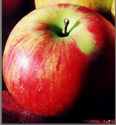 #AP2652SD Summer Rambo Semi-dwarf |
|
Summer Rambo Mid season Heirloom, France, circa 1530. One of the best of the all 'round apples. Tender, juicy green fruits with red blush. Make excellent pies or sauces. Vigorous grower producing large annual crops. Ripens mid-September. Hardy to -20F (-28.8C) #AP2652SD Semi-dwarf $39.95 |
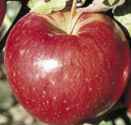 #AP1055D Sweet Sixteen Dwarf |
|
Sweet Sixteen Mid season This variety developed by the University of Minnesota can withstand temperatures as low as -50 degrees F without injury. Medium sized fruits are red and yellow striped with creamy white flesh and are sweet, crisp and aromatic. Good storing apple. Ripens late September. Annual producer. Hardy to -50F (-45C). #AP1055SD Dwarf $39.95 |
| #AP1055SD Sweet Sixteen Semi-dwarf |
|
Sweet Sixteen Mid season #AP1055SD Semi-dwarf $39.95 |
 #AP4350SD Tolman Sweet Semi-dwarf |
|
Tolman Sweet (Tolmans Sweeting, Brown's
Golden Sweet) Mid season Heirloom. An old New England apple with medium sized yellow-green fruits with a red blush. Very sweet and an excellent fresh apple, as well as a cooking variety. Hardy to -20F (-28.8c) #AP4350SD Semi-dwarf $ 59.95 |
 #AP4351SD Twenty Ounce Pippin Semi dwarf |
|
Twenty Ounce Pippin Mid season Heirloom, circa 1840 New York. One of the largest apples available, the fruit is green with red stripes with snowy white flesh. Great for eating fresh or for cooking. Hardy to -30F (-34.4C) #AP4351SD Semi-dwarf $59.95 |
 #AP4351S Twenty Ounce Pippin Standard |
|
Twenty Ounce Pippin Mid season Heirloom, circa 1840 New York. One of the largest apples available, the fruit is green with red stripes with snowy white flesh. Great for eating fresh or for cooking. Hardy to -30F (-34.4C) #AP4351S Standard $ 59.95 |
 #AP4335SD Virginia Beauty Semi-dwarf |
|
Virginia Beauty Mid season Heirloom, circa 1826 Virginia. Excellent eating apple with medium sized fruits, dark red with a green stem end. Very sweet unique flavor. A must try for every apple lover. Hardy to -20F (-28.8C) #AP4335SD Semi-dwarf $ 59.95 |
 #AP4335SD Virginia Gold Semi-dwarf |
|
Virginia Gold Mid season This cross between Newtown Pippin and Golden Delicious has green-yellow fruits with a tartness missing in Golden Delicious. Excellent sause and eating apple. Hardy to -20F (-28.8C) #AP4335SD Semi-dwarf $ 59.95 |
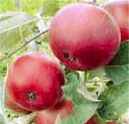
#AP1056SD Wealthy Semi-dwarf |
|
Wealthy Mid season Heirloom, circa 1860 Minnesota. An old favorite, this apple has large fruit with pale yellow skin and juicy white flesh with pink veins. Excellent for baking, apple sauce and eating fresh. Keeps well. Resistant to fire blight, rusts and scab diseases. Ripens early September. Annual producer. Hardy to -30F (-34.4C) #AP1056SD Semi-dwarf $39.95 |
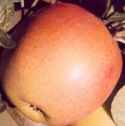 #AP2654SD Winter Banana Semi-dwarf |
|
Winter Banana (Banana, Flory) Late season Heirloom, circa 1876 Indiana. Large slightly elongated yellow fruits with a red blush. Early bearer with large annual crops. Good for processing and for cider. Ripens late September, early October. Hardy to -20F (-28.8C) #AP2654SD Semi-dwarf $39.95 |
| #AP2654SD Winter Banana Standard |
|
Winter Banana (Banana, Flory) Late season #AP2654S Standard $39.95 |

#AP4337SD Wolf River Semi-dwarf |
|
Wolf River Heirloom, circa 1875 Washington. Great big fruits, red over yellow, very juicy and sweet. One of the best drying apples; also good for apple butter. Hardy to -20F (-28.8C) #AP4337SD Semi-dwarf $ 59.95 |
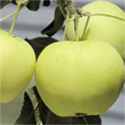 #AP1056SD Yellow Transparent Semi-dwarf |
|
Yellow Transparent (Russian Transparent,
Transparent) Early season Heirloom. Brought to the US from Russia in 1870, this is one of the earliest apples, producing heavy coprs of medium sized fruits with yellow green skin and yellow flesh. Excellent for apple sauce or for drying. Resistant to scab disease. Ripens late July, early August. Hardy to -20F (-28.8C) #AP1056SD Semi-dwarf $59.95 |
#AP1056S Yellow Transparent Standard |
|
Yellow Transparent (Russian Transparent,
Transparent) Early season #AP1056S Standard $39.95 |
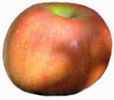 #AP4338SD York Imperial Semi-dwarf |
|
York Imperial (Johnsons Fine Winter) Late season Heirloom, circa 1830 Pennsylvania. Medium sized fruits are slightly flattened with a pinkish blush. One of the best keeping apples. It is not uncommon for us to pick Yorks in October that will keep until March the following year. Sweet, slightly tart taste. Hardy to -30F (-34.4C) #AP4338SD Semi-dwarf $ 59.95 |
Seedlings,
Seeds
&
Accessories
For
Orchardists
<>
Nurserymen
<>
Farmers
<>
Foresters
| HOME | | | HELP/FAQ | | | CONTACT US | | | ABOUT US | | | TERMS | | | SITE MAP |